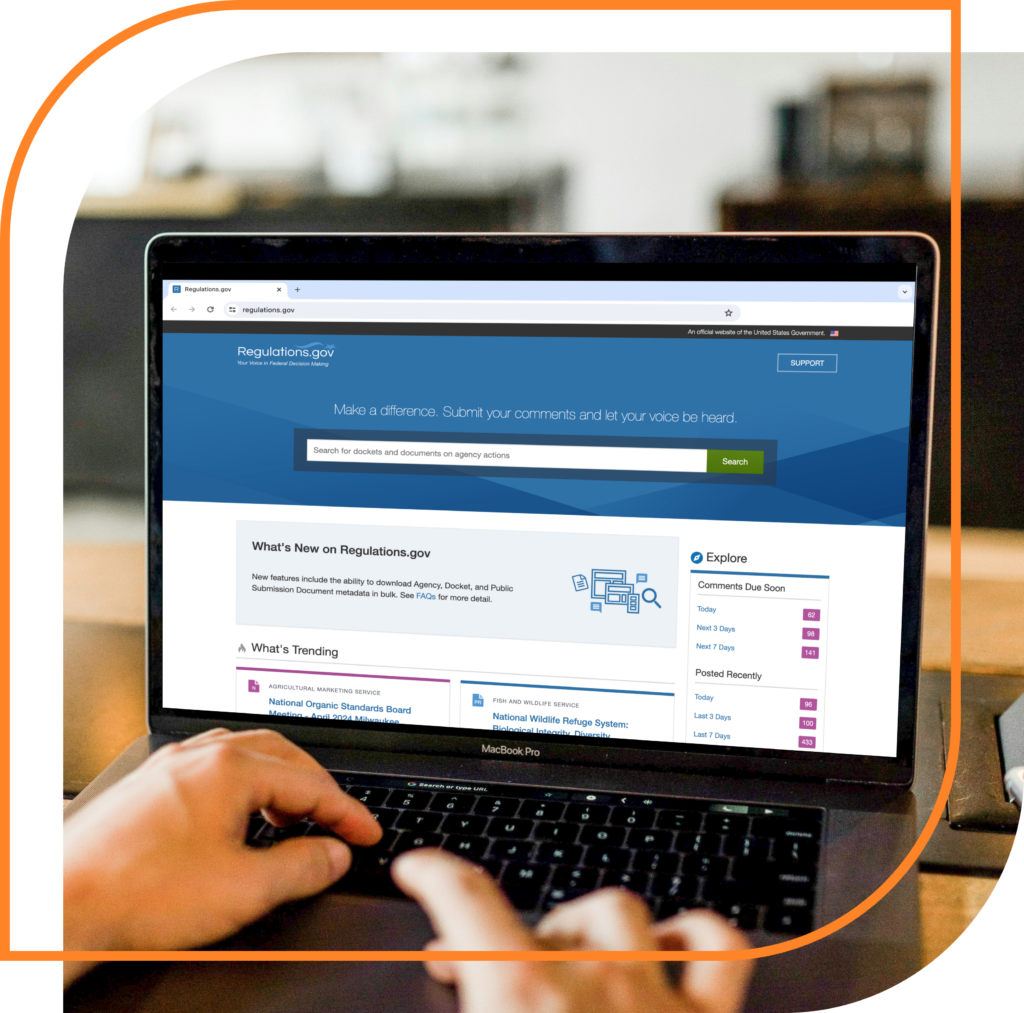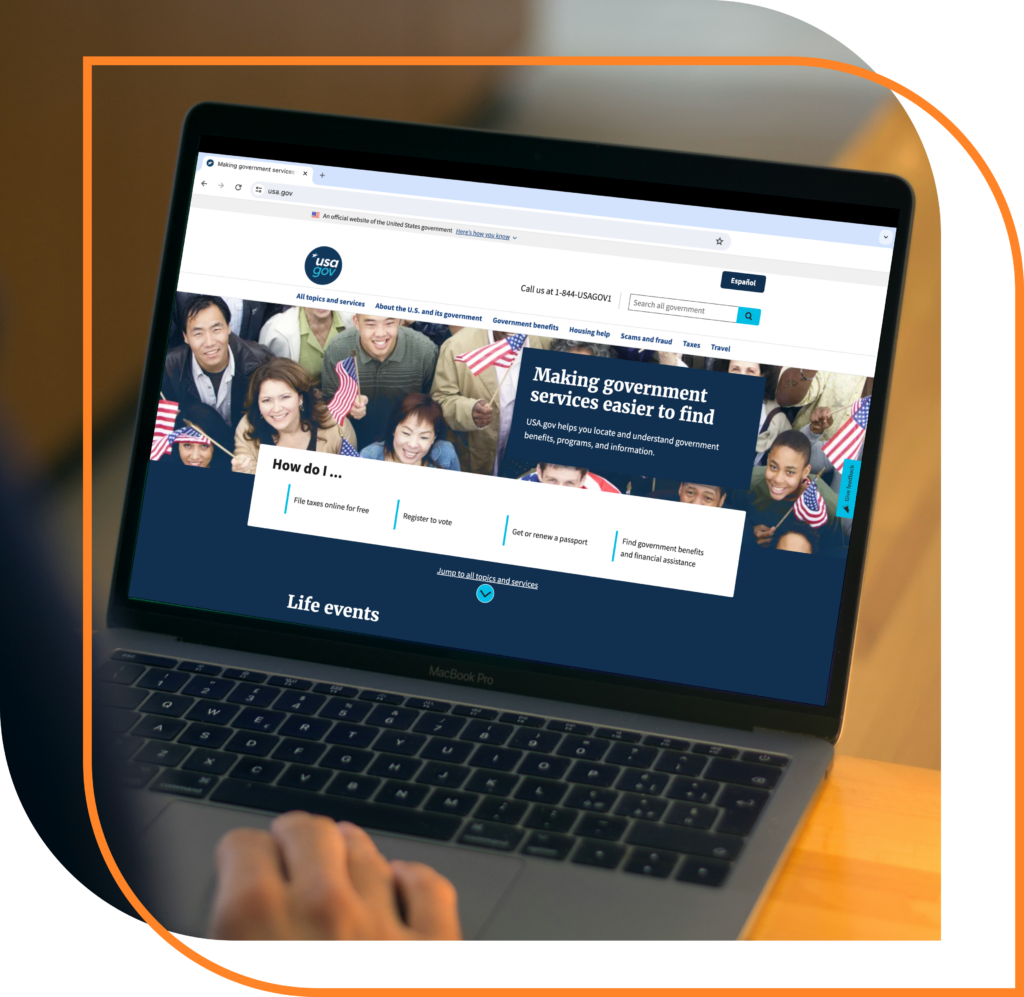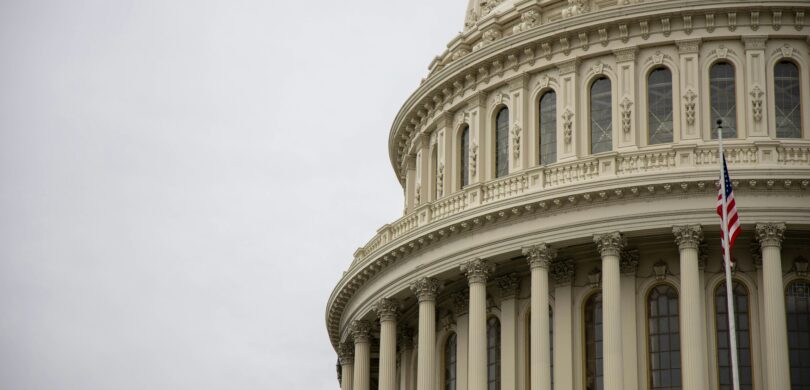The digital age has brought about the intersection of technology and government services. These services, known as e-government, have brought about innovative transformation. E-government is not just about moving services online. It’s about reimagining the relationship between the U.S. government and its citizens.
E-government has allowed the U.S. government to become more accessible, transparent, and inclusive. By harnessing technology, the government can streamline processes, reduce administrative burdens, and provide beneficial services to citizens. As such, e-government services bridge the gap between the government and its citizens. It makes it easier for Americans to access vital services, engage in policy-making, and hold their government accountable.
The E-Government Act of 2002
At the heart of this transformation in the United States is the E-Government Act of 2002. This landmark legislation was designed to improve the management of federal government activities. Prior to the E-Government Act, the U.S. government had a disjointed approach to digital initiatives. Federal agencies operated under a patchwork of systems and services, hindering rather than facilitating access to government information and services.
The E-Government Act was not merely a policy adjustment. It was a strategic overhaul designed to bring federal agencies into the digital age. The Act required Agencies to move towards electronic government. In doing so, it set the stage for a more interconnected and efficient federal infrastructure.
Objectives of the E-Government Act of 2002
The objectives of the E-Government Act were multifaceted and ambitious. It sought to make the federal government not only more efficient and cost-effective, but also more transparent and participatory.
Enhancing Internet-Based Services
Primarily, the Act sought to improve the management of e-gov services and processes. It promoted use of the internet and other technology to enhance citizen access to government information. Ultimately, legislators who supported the Act envisioned a government where citizens could easily access a wide array of services online, from renewing licenses to filing taxes and participating in public consultations.
Increasing Transparency and Opportunities for Citizen Engagement
The goals of the E-Government Act also extended to:
- Increasing opportunities for citizen participation in government
- Improving government accountability through enhanced access to information
- Maximizing the value of government information through increased availability and access
Bridging the digital divide was a key step towards achieving these goals. For effective e-government, all Americans must be able to access online government services.
Improving Collaboration Within the Government
Finally, the Act went beyond reducing costs and burdens for businesses and citizens. It also sought to improve collaboration between government agencies themselves. The Act created a technology-enabled, collaborative system to help government agencies share information and systems. As such, agencies were able to avoid duplication and leverage the power of technology.
What Did the E-Government Act of 2002 Do?
The E-Government Act established a framework for e-government initiatives. This included the creation of the Office of Electronic Government within the Office of Management and Budget. The new Office was tasked with overseeing the implementation of the Act.
The Act also called for:
- The development of federal websites to improve the service delivery to the public
- The protection of privacy in government websites and digital services
- The use of technology to improve the readiness for and response to emergencies
Overall, the Act laid the groundwork for a more unified, efficient, and citizen-centered approach to government service delivery. It was a significant step towards a fully digital government.
Key E-Government Initiatives
Regulations.gov
One of the pivotal outcomes of the E-Government Act is the eRulemaking initiative. This initiative changed how the public interacts with the rulemaking process, which is a cornerstone of democratic engagement. In the United States, rulemaking is a structured process where agencies develop, propose, and finalize new regulations. Rulemaking also allows for public input through notice and comment periods before implementation.
Engaging with the rulemaking process was once a daunting task. Regulations.gov has removed many of these barriers. Now, with a few clicks, individuals can:
- Submit comments on proposed regulations
- Review others’ submissions
- Stay updated on issues that matter to them
Regulations.gov has democratized access to shaping the laws and regulations that govern daily life.

The Traditional Regulatory Process: Cumbersome and Inaccessible
As mentioned, participating in the regulatory process was once cumbersome and inaccessible. Details of proposed rules were published in the Federal Register, a dense, daily journal of government activities. Beyond being well-versed in the procedural nuances of rulemaking, individuals had to know when a rule would be published. They had to navigate a complex submission process that varied from one agency to another. This system favored organizations with resources and knowledge, leaving the general public with limited avenues to participate.
The Impacts of eRulemaking on Digital Accessibility and Transparency
Regulations.gov was launched as part of the eRulemaking initiative. The platform centralized access to proposed rules and regulations from participating federal agencies. Now, citizens can easily search, view, and comment on them electronically. The impact of this shift on digital accessibility was profound. Regulations.gov now hosts millions of comments from the public on a wide array of rulemaking activities. In some cases, eRulemaking has enabled significant public influence on policy outcomes. During the Net Neutrality debate, the Federal Communications Commission (FCC) received millions of comments through the portal. Comments reflected a broad spectrum of views from individuals, businesses, and organizations. This public engagement played a crucial role in shaping the FCC’s approach to internet regulation.
The transition to eRulemaking has not just streamlined the rulemaking and regulatory process. It has fundamentally changed who can participate in rulemaking. By lowering the barriers to entry, Regulations.gov has empowered a more diverse and representative cross-section of Americans to have their voices heard.
USA.gov
Another critical development driven by the E-Government Act is the launch of USA.gov. USA.gov aggregates a vast array of government resources and services into a single, user-friendly platform. As such, it has simplified how citizens engage with government resources. On USA.gov, Americans can find information on federal programs and accessing services. It’s also a useful tool for learning about how the government works. USA.gov serves as a central gateway to the breadth and depth of what the U.S. government offers.
FirstGov.gov: The Foundation
FirstGov.gov, the first iteration of USA.gov, was launched in September 2000. The initiative was groundbreaking, providing citizens, businesses, and other government entities with a single point of access to an extensive range of resources. FirstGov.gov helped make the U.S. government more digitally accessible, allowing it to better serve Americans.
Its start was fueled by the vision and support of internet entrepreneur Eric Brewer. Brewer donated a powerful search engine technology, stemming from research funded by the Department of Defense. This donation was instrumental in accelerating the development and launch of FirstGov.gov.
In January 2007, FirstGov.gov rebranded as USA.gov. This change was more than nominal. It represented a strategic enhancement of the portal’s interface, usability, and scope of services. With this transition, USA.gov aligned with broader efforts under the E-Government Act.
Significant Milestones
Over the years, USA.gov has expanded its offerings and improved its user experience. Key developments include:
- The introduction of a Spanish-language counterpart, GobiernoUSA.gov (now USA.gov en Español)
- The launch of mobile applications and social media channels to reach a wider audience

These efforts have broadened the accessibility and convenience of government information.
USA.gov and its Spanish counterpart have seen a steady increase in user engagement. By FY 2022, the platform had engaged with over 105 million users. USA.gov’s continued growth and engagement reflects Americans’ growing reliance on digital resources for government-related information and services.
The Role of USA.gov Today
Today, USA.gov remains a central hub for Americans seeking to access government information and services. It enables users to navigate federal agencies and services with ease, including:
- Applying for benefits
- Finding health resources
- Learning about legal requirements
- Engaging in civic activities
USA.gov’s evolution and enhancements reflect the ongoing commitment to making government more accessible and transparent.
Healthcare.gov
Launched as part of the Affordable Care Act (ACA), Healthcare.gov is one of the most ambitious and scrutinized e-gov services initiatives in U.S. history. Launched in October 2013, it aimed to revolutionize the way Americans access and enroll in health insurance.
Healthcare.gov is an online marketplace where Americans can:
- Compare health insurance plans
- Determine eligibility for financial assistance
- Enroll in a plan that meets their needs
The platform’s rollout faced a gamut of implementation challenges. Regardless, Healthcare.gov marked significant successes. It also profoundly impacted American health insurance coverage rates.

Implementation Challenges
The initial launch of Healthcare.gov was fraught with technical issues. High visitor volumes overwhelmed the system. This led to long loading times, error messages, and difficulties in account creation and plan enrollment.
Integrating databases and systems across federal agencies proved challenging. Further, ensuring real-time data synchronization presented substantial hurdles. Finally, though of the utmost importance, ensuring the protection of personal and health information added complexity. These challenges hindered Healthcare.gov’s initial development and deployment.
But implementation challenges faced by Healthcare.gov were not just technical. Public perception issues and political controversy surrounded the ACA itself. As such, successful implementation required more than technical solutions. Strategic communication and outreach efforts were necessary to build trust and encourage use.
Successes and Evolution
Despite its rocky start, Healthcare.gov achieved improved stability, performance, and user experience. The federal government and technology teams undertook significant efforts to rectify early issues. These include:
- Enhanced server capacity
- Streamlined user interfaces
- More efficient back-end processes to verify users’ information and eligibility.
Over time, Healthcare.gov evolved into a more reliable and user-friendly platform.
Impact on Insurance Coverage Rates
Healthcare.gov has had a significant impact on health insurance coverage rates. Between 2010 and 2016, the ACA helped reduce the uninsured rate by 43%. This translates to approximately 20 million Americans gaining coverage. This reduction cannot be attributed solely to Healthcare.gov. State-run exchanges and Medicaid expansion also played significant roles. However, the platform has made health insurance more accessible and understandable to millions of Americans. Healthcare.gov helps Americans make more informed decisions about their health insurance. These decisions lead to better health outcomes and financial protection against medical costs.
Challenges and the Road Ahead
It’s clear that e-government services have transformed public engagement with the government. However, these benefits are not without challenges. Ongoing concerns remain, including:
- Ensuring privacy and security
- Overcoming disparities in access to technology
- Securing the necessary funding and management to sustain e-government initiatives
- Adapting to keep pace with technological changes
Cybersecurity Measures and Privacy Policies
Implementing robust cybersecurity measures and privacy policies is necessary to protect user data. Unauthorized access, data breaches, and other threats endanger the security of e-government services. Adopting a multi-layered security approach is necessary to safeguard personal information. Encryption, SSL certificates, and end-to-end data protections are key to this approach.
Beyond technical measures, comprehensive privacy policies are required. These policies ensure transparency in how personal data is collected, used, and stored. They must comply with regulations that set stringent standards for data privacy and security. These include the GDPR in the European Union and HIPAA in the United States.
User authentication processes have also been strengthened. Multi-factor authentication requires users to provide two or more verification factors in order to access their accounts. These measures not only enhance security, but also ensure that user data remains confidential and protected.
Bridging the Digital Divide
Disparities in access to technology prevent the U.S. from achieving inclusive digital governance. These disparities are often referred to as the digital divide. Various initiatives to enhance digital accessibility and literacy can address this issue.
Mobile Accessibility
Widespread smartphone use has led many e-government services to optimize for mobile access. Mobile apps and responsive design ensure that users can access government services anytime, anywhere. Mobile accessibility allows those who do not have access to a desktop computer or broadband internet to access e-gov services.
Multilingual Resources
To serve diverse populations, e-government platforms often provide resources in multiple languages. Non-English speakers require access to government services and information in their native language. Multilingual support not only enhances accessibility, but also promotes inclusivity. With multilingual resources, e-gov services ensure that language barriers do not impede access.
Outreach Programs
The U.S. government has also launched various outreach and education programs. Targeting underserved communities, these programs aim to raise awareness about e-gov services. They might also have the goal of improving digital literacy. To do so, outreach programs offer training and resources to help individuals navigate digital platforms and access online services. Community centers, libraries, and non-profits often collaborate on these efforts. Community partners provide crucial support in bridging the digital divide.
Increasing Internet Accessibility
Public Wi-Fi access points and subsidized internet service programs aim to increase internet accessibility. Directed towards low-income households, these initiatives address internet affordability and availability. These initiatives play a pivotal role in ensuring that all Americans can benefit from e-government services.
The Future of E-Government
Successful e-government requires continuous innovation, commitment, and public engagement. Future initiatives must build on the successes of Rulemaking.gov, USA.gov, and Healthcare.gov. They also must address the challenges inherent to e-government head-on. With these efforts, e-government services can continue to foster a more informed, engaged, and empowered citizenry.
Get Started With Plural
Plural Policy is committed to making government information on bills, legislators, and jurisdictions more accessible and transparent. Interested in getting started? Create a free account today to:
- Search legislative data from 53 US jurisdictions: 50 states, Washington, D.C., Puerto Rico, and U.S. Congress
- See comprehensive bill details, state-specific data, and legislator information
- Easily track bills and never miss an update
- Receive daily updates on the bills you’re monitoring




